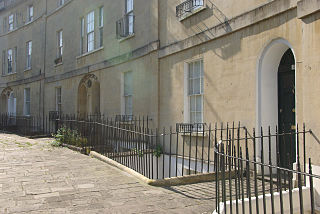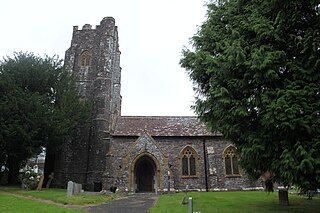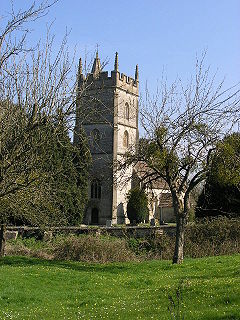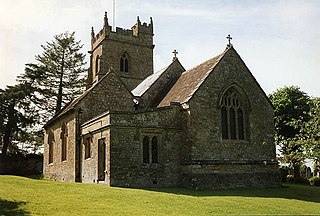| St. Matthew's Church | |
|---|---|
 | |
| General information | |
| Architectural style | Victorian architecture |
| Town or city | Widcombe, Bath |
| Country | England |
| Coordinates | 51°22′35″N2°21′7″W / 51.37639°N 2.35194°W Coordinates: 51°22′35″N2°21′7″W / 51.37639°N 2.35194°W |
| Construction started | 1846 |
| Completed | 1847 |
| Technical details | |
| Structural system | Bath Stone masonry |
| Design and construction | |
| Architect | G. P. Manners |
St Matthew's Church in Widcombe is an Anglican church located on Cambridge Place in Widcombe, the southeastern section of Bath, Somerset. Built 1846-1847 principally to designs by Bath City Architect George Phillips Manners, it is situated above the Widcombe Locks of the Kennet and Avon Canal and opposite the Church Room Institute on Cambridge Place. It is one of two churches in the parish of Widcombe, the other being the much older St Thomas à Becket. The bells of St Matthew's were taken from St Becket's in 1847, possibly by force.

Widcombe is a district of Bath, England, immediately south-east of the city centre, across the River Avon.

Bath is the largest city in the ceremonial county of Somerset, England, known for its Roman-built baths. In 2011, the population was 88,859. Bath is in the valley of the River Avon, 97 miles (156 km) west of London and 11 miles (18 km) south-east of Bristol. The city became a World Heritage site in 1987.
George Phillips Manners was a British architect, Bath City Architect from 1823 to 1862.
The church is dismissively described by Pevsner in his Buildings of England guides as "St. Matthew, Cambridge Place, Widcombe. 1846–7 by Manners & Gill. Dull, in the Dec[orative] style, with a [south] tower carrying a broach spire." [1]
The tall spire holds 6 bells.
Refurbishment during the 1970s adapted the church for use as a parish hall and provided meeting rooms and venues for various community and church events. [2]
In the summer of 2014 a newly planted congregation led by a new full-time Priest in Charge [3] recommenced weekly worship service on Sunday evenings.
A newly launched parish website [4] covers both parish churches within Widcombe benefice and plays an active part of the wider Bath deanery. [5]
A benefice or living is a reward received in exchange for services rendered and as a retainer for future services. The Roman Empire used the Latin term beneficium as a benefit to an individual from the Empire for services rendered. Its use was adopted by the Western Church in the Carolingian Era as a benefit bestowed by the crown or church officials. A benefice specifically from a church is called a precaria such as a stipend and one from a monarch or nobleman is usually called a fief. A benefice is distinct from an allod, in that an allod is property owned outright, not bestowed by a higher authority.
















